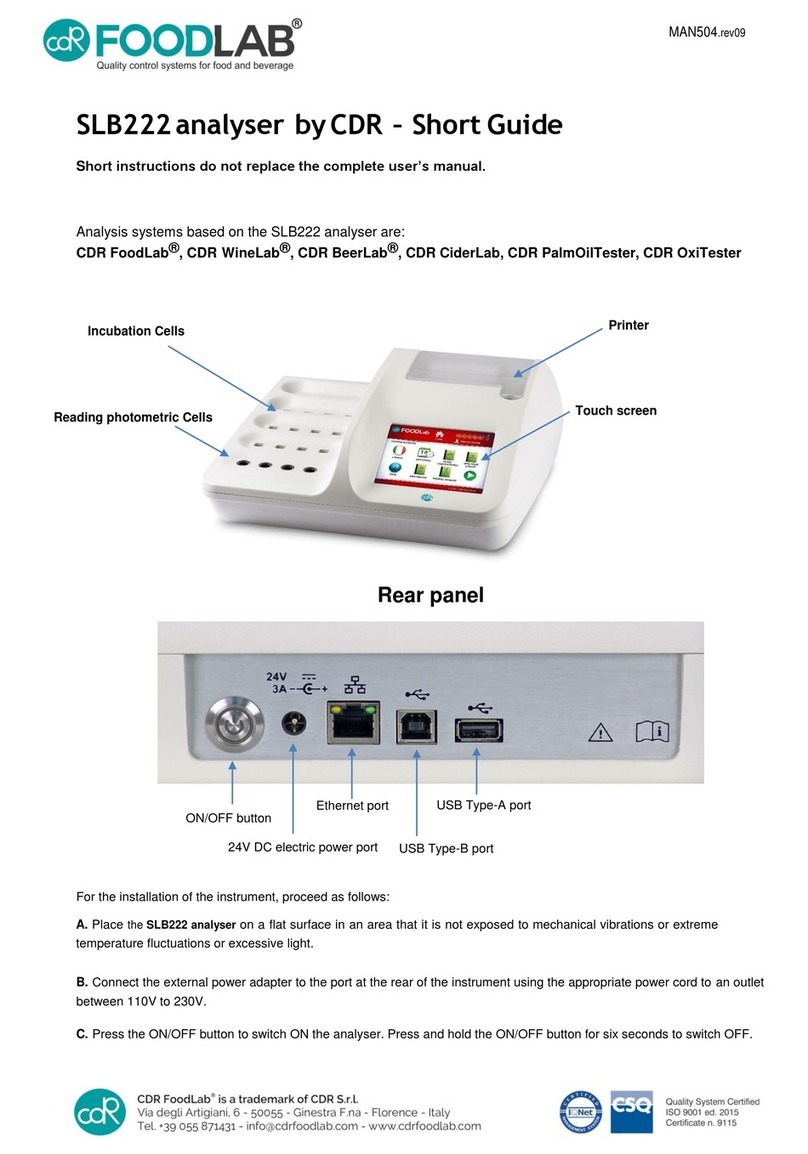
Operator’s manual
October 2012 5
1 General information
1.1 Intended use
FOODLABfat is made for the analysis of vegetable or animal oils and fats using cdR
test kits only together with special test application instructions. Note that the
matrixes can be very different of its nature and calibration curves need to be re-
calibrated.
1.2 Who will use the manual
This manual presents detailed information regarding the safety, characteristics,
installation, use, maintenance and disposal of the FOODLABfat instrument
manufactured by the cdR S.r.l. Company.
The manual is made for the training of the following categories of persons:
•Persons employed in the operation of the instrument (installation, use and
storage).
•Persons employed in the maintenance, if different from the persons employed in
the operation.
The instrument must be used according to the instructions specified in this manual. It
is highly recommended that these instructions are read very carefully before doing
any operation. Everything written and illustrated must be carefully noted. Respecting
the norms and recommendations written will allow the operator to use the instrument
in the correct way and using the correct methods as agreed by the manufacturer.
If the operator finds a disagreement between anything described in this manual and
the instrument he must advise the manufacturer immediately without using the
instrument. Any erroneous or inconsiderate use could provoke anomalies or mal-
functions of the instrument.
The Operator’s manual constitutes an integral part of the instrument and it is there-
fore necessary to conserve it in good condition in a safe place and at the disposition
of the operator (or whoever is authorised to use the instrument) for the whole
productive life of the instrument.
The instructions must be provided with the instrument in the case of sale, hire,
concessional use or financial lease of the instrument.
Advice for the operator.
The descriptions and illustrations attached to this document are only advisory. The
cdR S.r.l. Company reserves the right to make any change and any modification of
components, essential parts and suppliers that it thinks fit without prior notice and
also the updating of this publication. The reproduction of this document in whole or
in part and by any means is not permitted without prior written authorisation of the
author. Any eventual infraction will be followed according to the law. All names and
logos present in this manual are property of the respective manufacturers.





























